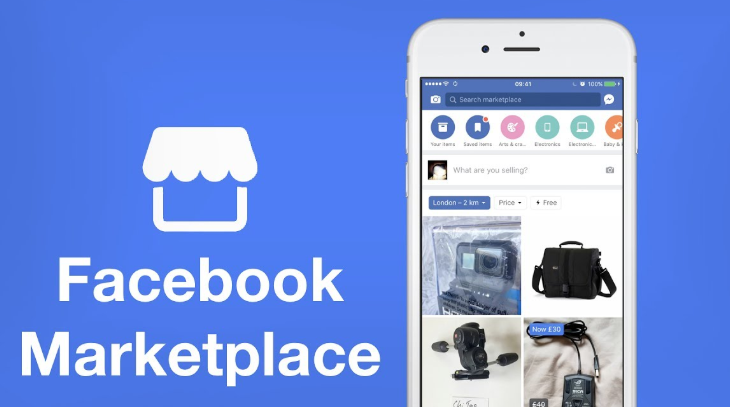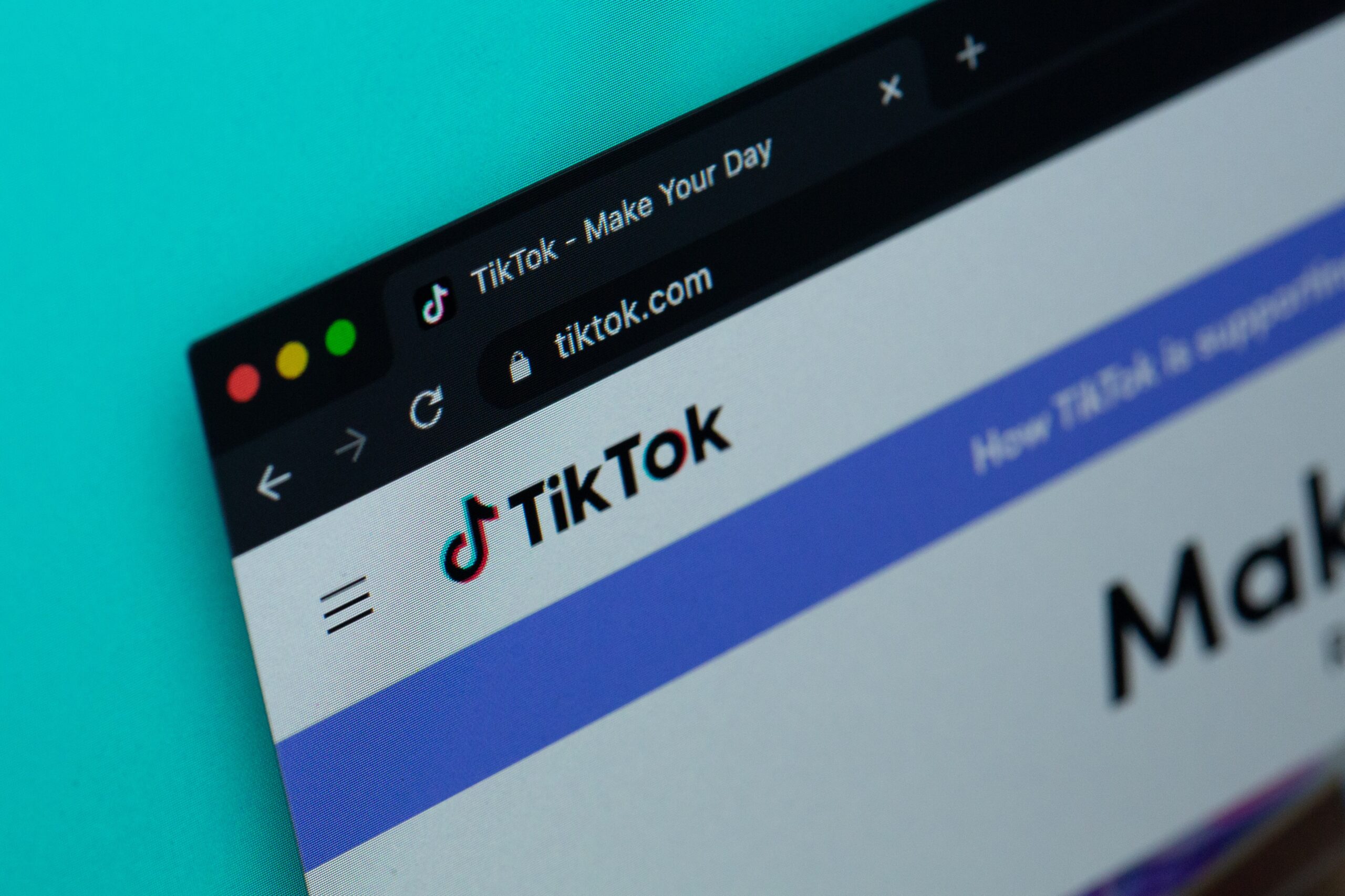Almost everyone is familiar with Facebook as a place to keep in touch with loved ones and share photos. It’s a little-known fact that you can actually make money selling on Facebook Marketplace. You don’t need anything more than a Facebook account to begin selling.
Here, I’ll show you how to sell on Facebook Marketplace using the same methods I use to help Amazon sellers.
So, what is the Facebook Marketplace? how to use Facebook marketplace?

When Facebook launched the Marketplace in 2016, it was an instant hit with local buyers. When it comes to selling locally, Facebook Marketplace beats Craigslist hands down.
As a result, Facebook now has a competitive advantage over Craigslist by allowing certain facebook marketplace categories of sellers to offer nationwide shipping, giving them access to a much larger market than local sellers.
What’s the size of it? 2.8 billion people use Facebook on a monthly basis. Facebook Marketplace has an estimated monthly user base of 800 million people.
The marketPlace is often mistaken for an online yard sale because of its roots as a local buy/sell platform for household goods. This is great for retail arbitrage, which is the practice of buying in-demand products from retail stores and selling them online at a higher price. However, its shipping capabilities also make it ideal for retail arbitrage.
Take some time to explore the Marketplace Facebook if you haven’t done so already and see what’s available. Everything from cars to couches, video games to furniture, and more can be bought and sold on sites like eBay and Craigslist.
[Also read: What is the Best Time to Post on TikTok in 2022]
How to get facebook marketplace? Who can sell? How to sell on Facebook marketplace?
Basically, the answer is: everyone. If you’ve got extra stuff lying around, you can sell it on Facebook Marketplace, but you can also sell your wares there if you’re an entrepreneur or a seller on Amazon, a woodworker, or a handmade artist.
There aren’t that many differences between Facebook and other e-commerce sites like Amazon and eBay when it comes to selling strategies.
If you’re selling locally, you won’t have to pay anything to list your products on Facebook as you would on other eCommerce or reselling platforms. 5 percent of the sale price is charged to the seller when the customer orders shipping. Even experienced eCommerce sellers can benefit from the low cost of advertising their products on Facebook.
To begin selling on Facebook marketplace, what do you need?

An active Facebook account is all you need to begin selling on Facebook Marketplace. That’s all there is to it! If you want to include shipping in your listings, you’ll need to enter your payment and shipping details. Certain features of the Marketplace facebook that are available in other countries are not available in India.
Find out more about how to sell on facebook marketplace works.
- In order to keep yourself and others safe, we recommend following the advice provided by your local health authorities and the World Health Organization (WHO) while purchasing and selling goods. To ensure your safety during this time, be sure to check and adhere to local laws and directives.
- Meeting in a police station or a well-lit public place is the best option if you must meet someone in person. Get the word out about where you’re going. Learn how to safely buy and sell Marketplace, as well as how to meet a Marketplace representative in person.
- There is no limit to how many people can see your listings on Marketplace and in the Feed, search, or other places on Facebook when you sell something. You must adhere to our Commerce Policy for all Marketplace and buy-and-sell listings.
To list a product for selling on facebook marketplace, follow these steps:
- In the left-hand menu of your Feed, select Marketplace.
- Click Next, click Item for sale, and create a new listing.
- To upload a photo of your item from your computer, click the Add photos button.
- Enter the details of your product here. The price of an item can be set to 0 to indicate that it is “Free.”
- To keep your profile private from your Facebook friends, click this button. Other Facebook users will still be able to see it.
- You can proceed by pressing the Next button. If the Next button is grayed out, double-check that you’ve entered all of the necessary information.
- To publish your Marketplace listing, click Publish.
A Step-by-Step Guide to Selling on Facebook Marketplace
1. Creating a FB Marketplace account is the first step in the process.
For selling on Facebook marketplace, you must already have an active Facebook account. There should be a “Marketplace” tab on the left side of your Facebook page. You can also look it up by typing “Marketplace” into the search bar.
- A Facebook account can be created in just minutes, even if you’ve never used it before.
- On Facebook.com, go to “Create New Account” and follow the onscreen instructions.
- Enter your details and click “Sign Up.”
Your account will be ready to use after that. You’ll need to provide some personal information in order to make yourself appear more trustworthy on the Marketplace on Facebook. As long as you don’t have any kind of profile picture or any kind of basic identification information, people won’t buy from you.
All right, let’s wrap this up! To access selling on Facebook marketplace, you must first have a Facebook account.
[Also read: Eva Elfie Wiki]
2. Choosing selling on facebook marketplace
Selling on Facebook marketplace is like eBay and Craigslist in that you can sell anything you want. To get started selling on Facebook, the first thing you should do is go through your house, garage, or attic to see if there is anything you no longer need that you could resell.
Everything from old furniture to old electronics, video games to kitchen appliances, books, and more can be included in this category. Take a look around the Marketplace to see what other sellers in your area are offering.
While you’re at it, look at the product descriptions and images of other sellers. As a potential customer, what did you find useful and what areas do you think to need improvement? Did the seller, for example, include the product’s dimensions and a variety of well-lit photographs? Keep your observations in mind as you create your own listings (more on building listings in Step 4).
Selling on Facebook marketplace has a variety of categories:
On the marketplace, you can sell in a wide range of categories, such as clothing, musical instruments, and pet supplies.
The full list of categories is as follows:
- Renting a car or a house
- Apparel
- Classifieds
- Electronics and entertainment for the whole family are available at no charge.
- Gardening and other outdoor pursuits
- Decorative items for the home
- Supplies for home improvement
- supplies for animals
- Athletes’ gear
- Games and toys
- Groups
No matter what type of business you’re in, there’s a Facebook group for you.
3. Investigation of New Products
Do some product research before you begin selling on Facebook Marketplace to ensure that what you are selling is profitable. If you want to start an eCommerce business on Facebook, you must take this step.
Effective product research is based on data: how many units of a given product are sold over time and at what price, as well as how many other sellers compete for the same customers within a specific niche, are all taken into account.
When it comes to selling on Facebook marketplace, we don’t have a lot of useful data on what sells or doesn’t sell. Instead of speculating on what will sell, you could look at what has been successful on other marketplaces like eBay and Amazon to get an idea of what works.
Ecommerce business tools that do the heavy lifting can be found, as well as shortcuts for estimating profitability. Jungle Scout is one such tool. Profitable opportunities can be discovered with just a few clicks using powerful features like Product Database and Keyword Scout. Despite the fact that Jungle Scout’s product research tools were developed for Amazon’s marketplace, the information they provide can be applied to selling on Facebook marketplace.
In order to conduct product research, you don’t have to rely on software—I’ll show you some manual methods. But when it comes to selling online, you should always rely on data rather than your own intuition—it’s science.
Considering profitability, demand, and competition are the three most important aspects of product research for any online marketplace.
Profitability
If you’re selling locally, you don’t have to worry about selling fees on Facebook. There are no listing or referral fees of any kind.
Facebook will only charge you 5% of the sale price of your item if you include shipping in your listing. Using their checkout system incurs a fee to cover the costs of payment processing.
The fee is $0.50 if you sell a product for $10 on Facebook, for example.
Then there’s:
eBay charges a fee of 14% plus shipping costs.
Amazon charges a referral fee of 15% and an FBA fee of 15%.
Take your purchase price and deduct it from your selling price to get an idea of your profit margin.
Demand
Due to the lack of information provided by Facebook, we are forced to rely on data from eBay and amazon in order to get an accurate picture of what is selling.
We can calculate a product’s sell-through rate, or the percentage of sold listings compared to the total number of listings, on eBay because we can see sold and completed listings. In our guide to selling on eBay, we go over this process in great detail, but we’ll go over it again here.
If you have a high sell-through rate, it means there is a lot of demand for the products you list. There is little demand for a product with a low sell-through rate.
A good sell-through rate is what? Consider products with at least a 50% sell-through rate if you want to sell them quickly. For products that don’t sell within a few weeks to a few months, you may have to wait longer.
We can easily determine a product’s sell-through rate using eBay’s advanced filters and search results. Let’s look at an example first..
“Charizard cards” are what I’m looking for on eBay. There are 19,816 results for that search term in Google. This means that there are currently 19,816 active Charizard card listings on the internet right now.
The “Sold Items” and “Completed Items” filters are located at the bottom of the page. These boxes should be checked.
64,157 results are returned by this filtering. Wow! It’s been 90 days since the release of 64,157 Charizard cards.
Charizard cards have a high sell-through rate. A sell-through rate of 323 percent can be calculated by dividing 64,157 (sold and completed listings) by 19,816 (active listings). Charizard cards are in high demand because of this. It’s a good idea to list them on eBay if you can get your hands on any.
Search marketplace on Facebook
Let’s try selling on facebook marketplace this time. After conducting a similar keyword search, this is what I’ve uncovered.
Because eBay indicates that there’s even more demand for Charizard cards than there is for those on Facebook Marketplace, the sheer volume of listings shouldn’t scare us away.
Jungle Scout is the next product research tool you might want to investigate. In addition to providing Amazon sellers with a comprehensive set of tools, such as daily and monthly sales volumes, historical pricing and sales rank data, the company’s data analytics capabilities also help them identify new products they might be interested in selling.
Set your own filters and see the most popular products in any Amazon category by using the Product Database.
Let’s see how many Charizard cards Amazon has in stock. I’ll use Product Database to look for Amazon product listings with at least 100 monthly sales and the keywords “pokemon” and “Charizard” in the “Toys & Games” category.
That search returns more than 200 results that match my exact search criteria.
In the Monthly Sales column, we see that Pokémon card listings sell hundreds of times a month, making this a good niche to pursue.
Search volume and trends for specific keywords can be viewed using Keyword Scout.
I used Keyword Scout to find out how often real Amazon customers search for Pokemon products, including Charizard cards, to get an idea of the popularity of the term “Pokemon cards.” Keyword Scout provides me with related keywords, monthly search volume, how popular this keyword has been in the past 30 days, and more.. When determining whether a product has sufficient demand, I set a minimum of 500 to 1000 monthly searches as a seller.
Many people search for “pokemon cards” and related keywords every month, with many of these searches increasing in popularity. Pokémon cards are in high demand!
Find high-demand and low-competition product ideas with Opportunity Finder.
In order to find profitable product niches, Opportunity Finder reveals high-demand, low-competition keywords. Searching for the terms “pokemon cards,” “Charizard,” and other terms associated with the category of “Toys & Games,” with competition set to “Very Low,” will yield some interesting results.
Take a look at the “Competition” and “Niche Score” columns for some good news.
It’s between 6 and 7 on the 1-10 scale, with 10 being the best opportunity, for each of these keywords. This is a niche with low competition and medium-high demand.
Jungle Scout will provide you with a wealth of information about demand, competition, and potential profitability without requiring you to do any math.
Competition
For selling on Facebook marketplace, you’ll have to compete with a slew of other sellers to sell anything from a used couch to your own creation.
The Charizard card shows how easy it is for a listing to get buried in the results. Optimize your listing with high-quality photos and a keyword-rich description to stand out from the competition. You can learn how to do that in the next section.
[Also read: Ana Lorde Biography]
Ideas for new products: a how-to guide
Take a look at eBay’s “Trending Deals” page if you’re having trouble deciding what to sell on Facebook. Products that are in high demand can be found there.
To help you focus your product search, here are some tips:
Pay attention to new releases of well-liked products.
Make the most of hotly anticipated product launches. On eBay and Facebook, for example, resellers bought up the stock of the recently released Xbox One S and PlayStation 5 gaming systems.
Stay up to date on the latest developments in your industry.
Refer back to the Pokemon/Charizard card as an example. People want to buy Pokemon trading cards because their resale value has skyrocketed in the last few months.
Product offerings specific to the time of year
Take a look at the various things you purchase throughout the year as the seasons change. Winter is a great time to stock up on coats, jackets, and other winter accessories. During the summer, inflatable pools and swimwear are in high demand.
Ordinary, day-to-day items
While it’s great to sell hot, in-demand items, reliable eCommerce best-sellers often go unnoticed because of their consistency. Furniture, cleaning supplies, books, and glassware can all be sold on Facebook Market place. These products will always be in demand.
Step 3: Where to find items for sale on Facebook marketplace
You’ve figured out what products will sell on Facebook, but how do you actually get your hands on these items? Facebook product sourcing is similar to eBay product sourcing in many ways. We’ll start with retail arbitrage because that’s the most efficient method, in my opinion. However, I’d like to discuss a few other options.
Products from retail stores can be resold
A business model that thrives on Amazon is known as retail arbitrage. In fact, 19% of Amazon sellers engage in retail arbitrage, and more than half of them generate monthly sales of $1,000 or more.
It’s proven to be effective on eBay, so there’s no reason it won’t work on Facebook as well. Customers will come to you if people in your area are looking for the same products.
It’s important to keep in mind that Facebook users aren’t shy about shaming sellers who try to jack up their prices. This type of person should be ignored by pricing your arbitrage products fairly. People who want to buy will eventually contact you.
Look for bargains in retail establishments like Walmart, Target, and even the supermarket’s clearance or sales section. There’s a good chance you’ll come across some excellent finds to resell.
When you’re out and about, use the eBay app and the sell-through rate method we discussed in Step 2 to keep an eye out for profitable opportunities.
Create and sell your own private-label products
In most cases, if you’re selling a product under your own brand on Facebook Marketplace, it’s already on your list of places to put it up for sale. Currently, 10% of Amazon sellers (most of whom run private-label businesses) are selling on Facebook, and another 8% plan to do so by 2021.
If you’ve never heard of a private-label product before, you should know that it’s a tried-and-true way to make money on Amazon, and it’s also a great way to make money on Facebook. Remember that Facebook Market place has more than 800 million active users in the United States—a huge potential customer base.
A few benefits of using your own private label:
- It’s up to you to create your own product and brand identity.
- The fact that you can sell something no one else can distinguish you from the competition.
- To save money, look for suppliers outside of the United States.
- Creating a private label product and finding suppliers are covered in detail in our newly revised guide on how to sell on Amazon.
To know more on how to sell on marketplace, stay tuned to more coming blogs on how do I get marketplace on Facebook.




